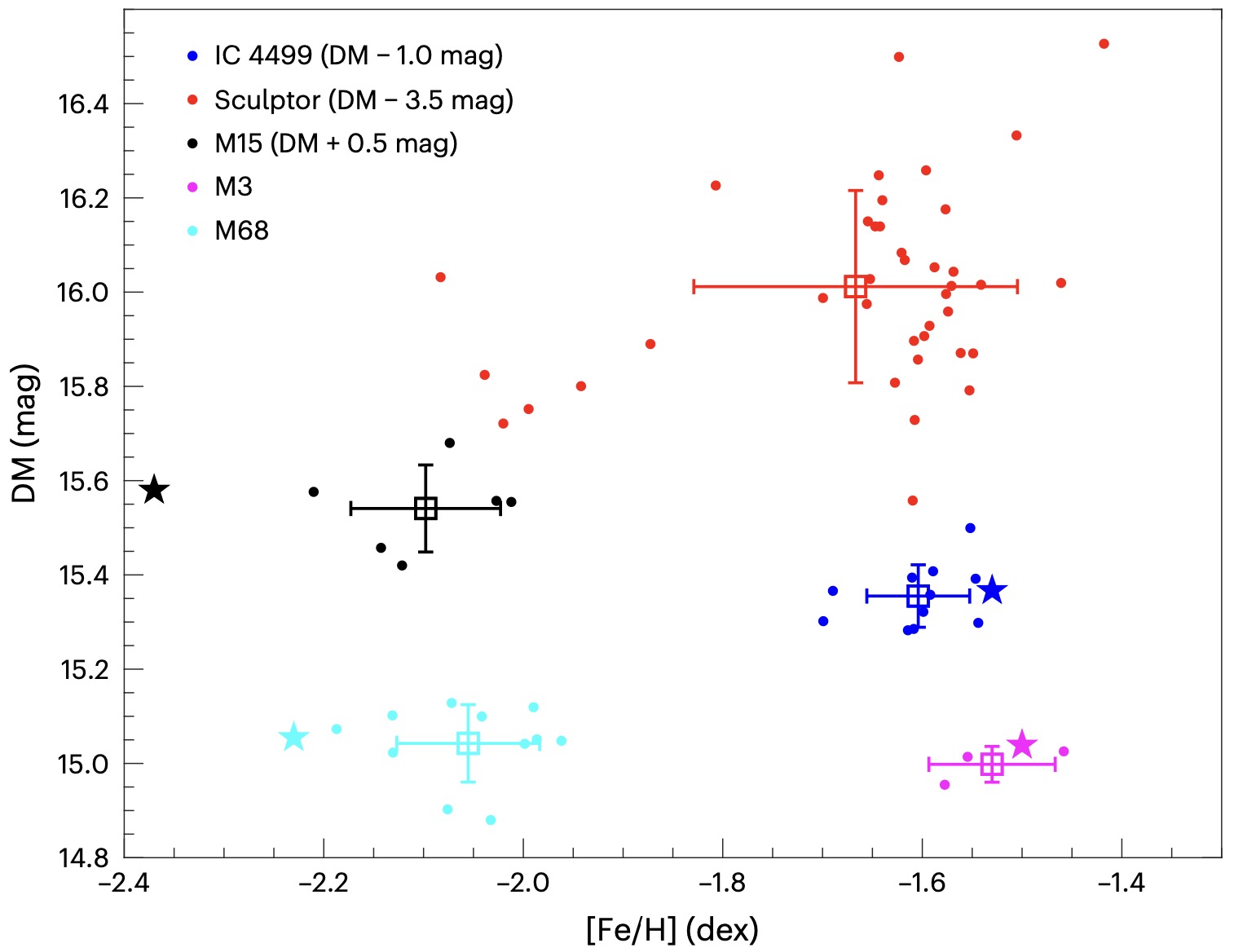
Our Universe consists of hundreds of billions of galaxies, and for nearby galaxies, distances are mainly measured by classical Cepheids and RR Lyrae (RR Lyr) stars.
RR Lyr stars are pulsating variable stars that are 100 times brighter than our Sun and more than twice as old. They can be used as a standard candle for measuring the distances of galaxies, due to the tight relationship between their pulsation period and luminosity at the same elemental abundance.
Based on this knowledge, astronomers from the National Astronomical Observatories of the Chinese Academy of Sciences (NAOC) proposed using double-period RR Lyr stars to measure the distances of galaxies, with the distance error of galaxies being optimized to 1-2%.
Their study was published in Nature Astronomy on June 19.
About 5% of RR Lyr stars pulsate with more than one period. Double-period RR Lyr stars are unique because the two periods are associated with stellar properties such as mass and elemental abundance.
"We find that the elemental abundance can be represented by two periods, and thus a period-luminosity relation independent of the elemental abundance was established," said Dr. CHEN Xiaodian, lead author of the study.

Fig. 1 Distance and elemental abundance measurements for dwarf galaxies and globular clusters (Image by NAOC)
Compared to measurements of elemental abundance, measurements of period are both easy and accurate.
"Our work provides a method by which distance measurements of nearby galaxies can be obtained from photometry alone, without relying on spectroscopic observations," said Dr. DENG Licai, a senior researcher at NAOC and co-author of the study. "This will increase the sample of galaxies with high-precision distance by a factor of 20 or more."
Double-period RR Lyr stars are valuable probes that provide not only reliable distances but also information about elemental abundances.
In the coming years, the China Space Station Telescope and the Vera C. Rubin Observatory will discover tens of thousands of double-period RR Lyr stars in nearby galaxies. Using a distance measurement method based on double-period RR Lyr stars, we expect to see a 3D intuitive map of the Local Group and obtain a high-precision Hubble constant.

Fig. 2 3D intuitive map of the Local Group (Image by NAOC)

86-10-68597521 (day)
86-10-68597289 (night)

52 Sanlihe Rd., Xicheng District,
Beijing, China (100864)

